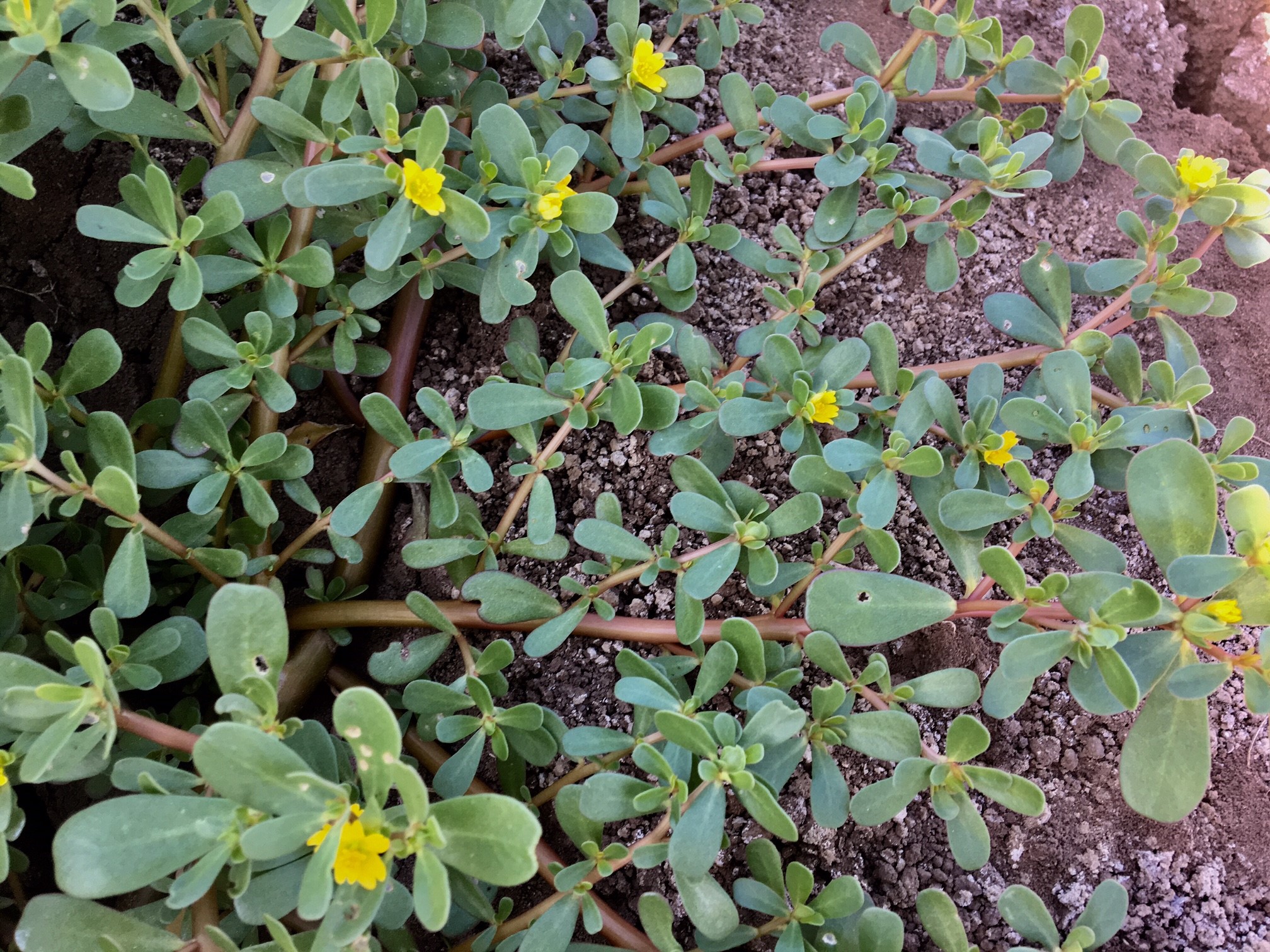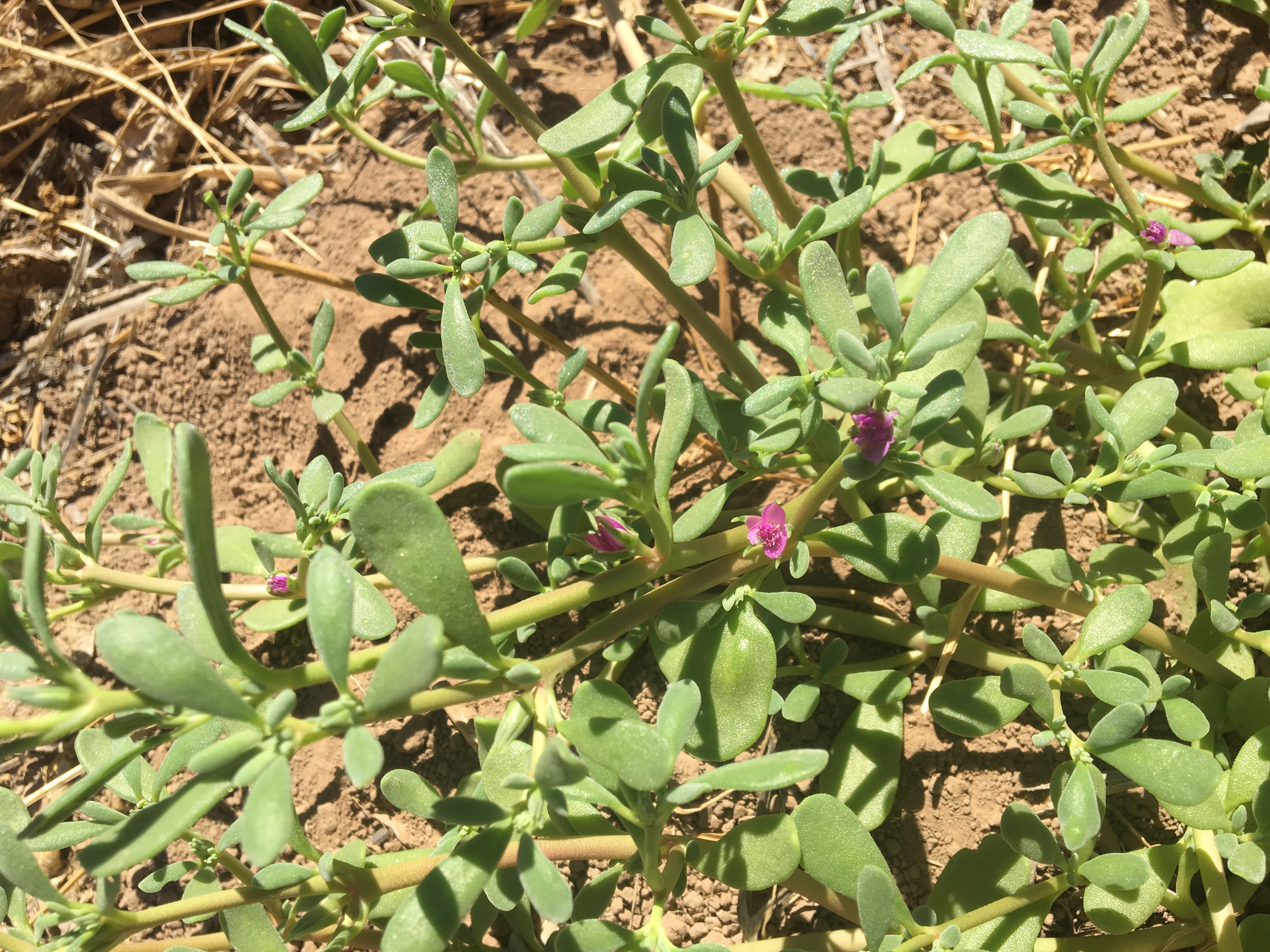
|
|
|
|

|
|||
|
|
|||
|
|
|||
Common Purslane (Portulaca oleracea) is at the same time one of the most troublesome weeds in vegetable crops and one of the most nutritious leafy vegetables. It is very widespread in the desert southwest but is also on the list of Arizona Prohibited Noxious Weeds, which means that it is prohibited from entry into the state. Common Purslane is eaten in Mexico (Verdolaga), Europe and Asia and contains more omega 3 fatty acids than any other leafy vegetable. It also contains vitamins A, B and C and dietary minerals. Common Purslane is often lumped together with Horse Purslane although the two are in different families. Common Purslane is in the Portulaca family while Horse Purslane is in the Trianthema or Carpetweed family. In lettuce, Purslane is often controlled during ground preparation where it is geminated and killed with chemicals or tillage. Timing is important with both of these techniques. Purslane grows rapidly and one plant can produce thousands of seeds. These seeds can germinate in 12 hours after receiving moisture in August and September. They can also germinate in January and February but will take 3-7 days to germinate at that time. The stems are very succulent and unless they are completely killed and desiccated they can reroot at the nodes. Tillage that does not completely desiccate the plants can spread rather than eliminate this weed. |
|||
| Back | |||
|
For questions or comments on any of the topics please contact Marco Pena at the Yuma Agricultural Center.
|
|||
|
Home |
Cotton | Veggies |
Forages | Grains
| Citrus |
Crop x Crop Insects | Diseases| Weeds | Pesticides | Economics | News | Weather | Research | Photos | Contacts | General Info. Copyright © 2001 University of Arizona, College of Agriculture and Life Sciences Webmaster: Al Fournier (acis@ag.arizona.edu) |
|||


